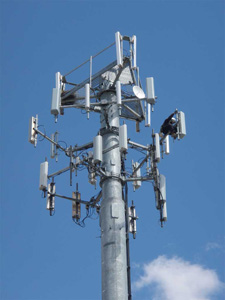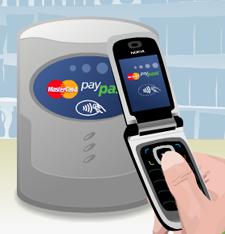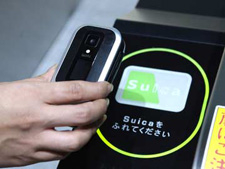The convergence of prepaid wireless and financial services
pay as you go cell phone services on this site. From cheaper overall costs to only paying for the minutes you use, there’s something for everyone in prepaid wireless. However, we’ve seen the industry face some challenges lately. Namely, the economic crunch that faces a number of US citizens. This in some ways can advantage the prepaid wireless industry, in that some families which formerly used postpaid cellular services might be more apt to save money with prepaid once their contract expires. It hurts in others, though, as lower income families might not have enough disposable income to justify owning a cell phone. This has hit carriers like Virgin Mobile USA, which has lost a number of subscribers over the past few quarters. Clearly, the industry is due for a change. But how is that change going to manifest? This is a question directly addressed at last week’s Prepaid Press Expo. A number of folks within the industry, and in other industries, got together to talk about where we’re going with this.
Diversifying prepaid offerings
 Profiting on basic services — that is, voice and text — isn’t going to cut it anymore. This is true for carriers like Cricket Wireless and Metro PCS, which own and operate their own networks, and especially true for MVNOs like Virgin and Page Plus, which depend on other operators to supply their services.
Yet, carriers cannot just jump into advanced data services. Amp’d Mobile gave that a try, and the result was predictable. They came out swinging, which seems like a good idea. But they didn’t have anything to fall back on. Yes, Peter Adderton, Amp’d’s former CEO, was well-known for bringing Boost Mobile to the states, but few outside the industry knew that. Instead, they just saw a new brand of mobile phone. Few knew how to react to it. Over time, Amp’d might have been a success. But Verizon, their primary investor and the network on which they operated, saw the game they were playing and said, “I want in.” They had the brand to pull it off. All they had to do was call in Amp’d’s debt, and that was the end of that venture.
In a way, mobile content is one way for a prepaid company to thrive. However, I believe this places too much emphasis on the company’s possible profit. Yes, content like ringtones, wallpaper, and even mobile video is a way to increase ARPU. But are the customers willing to spend that money? Remember, the core market for prepaid cellular is lower income individuals and families. While that market has expanded over recent years, the lower income sector is still the core. Most of the time, they’re there just for voice and maybe text. So a company might not benefit all that much from offering advanced mobile content.
Profiting on basic services — that is, voice and text — isn’t going to cut it anymore. This is true for carriers like Cricket Wireless and Metro PCS, which own and operate their own networks, and especially true for MVNOs like Virgin and Page Plus, which depend on other operators to supply their services.
Yet, carriers cannot just jump into advanced data services. Amp’d Mobile gave that a try, and the result was predictable. They came out swinging, which seems like a good idea. But they didn’t have anything to fall back on. Yes, Peter Adderton, Amp’d’s former CEO, was well-known for bringing Boost Mobile to the states, but few outside the industry knew that. Instead, they just saw a new brand of mobile phone. Few knew how to react to it. Over time, Amp’d might have been a success. But Verizon, their primary investor and the network on which they operated, saw the game they were playing and said, “I want in.” They had the brand to pull it off. All they had to do was call in Amp’d’s debt, and that was the end of that venture.
In a way, mobile content is one way for a prepaid company to thrive. However, I believe this places too much emphasis on the company’s possible profit. Yes, content like ringtones, wallpaper, and even mobile video is a way to increase ARPU. But are the customers willing to spend that money? Remember, the core market for prepaid cellular is lower income individuals and families. While that market has expanded over recent years, the lower income sector is still the core. Most of the time, they’re there just for voice and maybe text. So a company might not benefit all that much from offering advanced mobile content.
MVNOs facing the largest challenge
 When we talk about new and small operators, most of the conversation gears towards MVNOs. If we see any new mobile carriers pop up, the first instinct is to assume it’s an MVNO. After all, it’s not like just anyone can go out and purchase spectrum. We saw the spectrum auction process earlier this year, and it’s not an easy one to navigate. Nor is it cheap. It takes either an existing carrier or another communications entity, and a large one at that, to obtain spectrum. And even then, it has to come in the form of an FCC auction. Those don’t happen too often.
This isn’t even mentioning the cost of building a network. As we saw when examining MetroPCS’s efforts in Boston, the costs associated with a network aren’t exactly cheap. So not only does the spectrum cost some serious dollars, but the expense of building the network can make such a maneuver prohibitive for a new entrant. So it appears the most efficient, and possibly only, way into the cellular space is through the MVNO route.
The problem, as we’ve discussed, is that the margin between wholesale and retail has narrowed considerably in the past few years. This means that companies which have relied on voice and text services, like Movida, falter. They simply can’t make the model work with such thin margins. It’s also part of the reason we saw XE Mobile fail. If it’s just voice and text you’re offering as an MVNO, it’s time to rethink your model. This doesn’t just mean more mobile content. It means expanding the scope of services provided.
When we talk about new and small operators, most of the conversation gears towards MVNOs. If we see any new mobile carriers pop up, the first instinct is to assume it’s an MVNO. After all, it’s not like just anyone can go out and purchase spectrum. We saw the spectrum auction process earlier this year, and it’s not an easy one to navigate. Nor is it cheap. It takes either an existing carrier or another communications entity, and a large one at that, to obtain spectrum. And even then, it has to come in the form of an FCC auction. Those don’t happen too often.
This isn’t even mentioning the cost of building a network. As we saw when examining MetroPCS’s efforts in Boston, the costs associated with a network aren’t exactly cheap. So not only does the spectrum cost some serious dollars, but the expense of building the network can make such a maneuver prohibitive for a new entrant. So it appears the most efficient, and possibly only, way into the cellular space is through the MVNO route.
The problem, as we’ve discussed, is that the margin between wholesale and retail has narrowed considerably in the past few years. This means that companies which have relied on voice and text services, like Movida, falter. They simply can’t make the model work with such thin margins. It’s also part of the reason we saw XE Mobile fail. If it’s just voice and text you’re offering as an MVNO, it’s time to rethink your model. This doesn’t just mean more mobile content. It means expanding the scope of services provided.
Financial services
 As I mentioned last week, mobile payments will be the future of the industry. That’s a broad term, and it coves a number of services. They’ll also be offered on postpaid phones. However, financial services offers prepaid carriers, particularly MVNOs, to pick up the margins they’re losing on voice services.
Imagine the convenience of being able to hook your prepaid debit card up to your prepaid wireless account. Buying minutes would involve just a simple transfer. Plus, in such scenarios there might be a deal on minutes, creating a further benefit for the consumer. I spoke to one person at the Prepaid Press Expo who is planning a service like this. It certainly sounds like an idea that can boost an MVNO at the margins.
Next on the list is smart cards. While the term isn’t familiar to everyone, it will be soon. A for-instance would be some debit cards which have a computer chip built in. If you go to a participating retailer — CVS has what they’re calling PayPass — you can just hold your card over the sensor, and it will record your payment. No need for a magnetic stripe. It’s all done through that little chip in your debit card.
As I mentioned last week, mobile payments will be the future of the industry. That’s a broad term, and it coves a number of services. They’ll also be offered on postpaid phones. However, financial services offers prepaid carriers, particularly MVNOs, to pick up the margins they’re losing on voice services.
Imagine the convenience of being able to hook your prepaid debit card up to your prepaid wireless account. Buying minutes would involve just a simple transfer. Plus, in such scenarios there might be a deal on minutes, creating a further benefit for the consumer. I spoke to one person at the Prepaid Press Expo who is planning a service like this. It certainly sounds like an idea that can boost an MVNO at the margins.
Next on the list is smart cards. While the term isn’t familiar to everyone, it will be soon. A for-instance would be some debit cards which have a computer chip built in. If you go to a participating retailer — CVS has what they’re calling PayPass — you can just hold your card over the sensor, and it will record your payment. No need for a magnetic stripe. It’s all done through that little chip in your debit card.
 Clearly, this can have a place inside, or even outside, a mobile phone. One of the speakers at the conference showed us his iPhone, which had a sticker on the back panel. This was his PayPass. Instead of pulling a card out of his wallet, all he has to do is hold his cell phone up to that sensor. This is being tested out West, with Jack in the Box restaurants, and the Bay Area Rapid Transit system (BART).
Prepaid carriers should be at the forefront of these mobile payment services movements. At a time when margins are falling, carriers have to find another way to attract customers. Mobile content, while profitable for larger carriers, might not work as well for prepaid carriers, which typically see a much lower ARPU. The idea behind mobile payment systems is that it brings usefulness to the table, rather than luxury. Give the people what they want. But if they can’t afford what they want, give the people what they need.]]>
Clearly, this can have a place inside, or even outside, a mobile phone. One of the speakers at the conference showed us his iPhone, which had a sticker on the back panel. This was his PayPass. Instead of pulling a card out of his wallet, all he has to do is hold his cell phone up to that sensor. This is being tested out West, with Jack in the Box restaurants, and the Bay Area Rapid Transit system (BART).
Prepaid carriers should be at the forefront of these mobile payment services movements. At a time when margins are falling, carriers have to find another way to attract customers. Mobile content, while profitable for larger carriers, might not work as well for prepaid carriers, which typically see a much lower ARPU. The idea behind mobile payment systems is that it brings usefulness to the table, rather than luxury. Give the people what they want. But if they can’t afford what they want, give the people what they need.]]>

Hi,
With wireless devices becoming a necessary good for the consumers, Service providers also going soft with the services. Post paid to prepaid is one among the service which is giving a good alternative for the mobile user to have good alternative for the costly Prepaid service.
Good article; makes sense. In terms of mobile payments, customers can already setup their prepaid debit cards to their prepaid phones. The trick is making this process easier, and quite simply, promoting it thru education and incentives. But be cautious of maintaining relationships with key retailers and details who help with acquisition and make most of their money from replenishment. Too much debit card usage and they’ll start to lose business. There are ways to cut then into it, but that’s a discussion for another day ;-).
I really believe that beyond financial services and the like, the real untapped opportunity for prepaid is to take on postpaid. Consider that aside from large phone subsidies afforded by long contracts, prepaid value is so good now that it rivals that of postpaid. The postpaid carrier than launches a targeted strategy in this arena is bound to capture massive growth…in my opinion.
Cheers,
PrepaidWirelessGuy
http://www.prepaid-wireless-guide.com